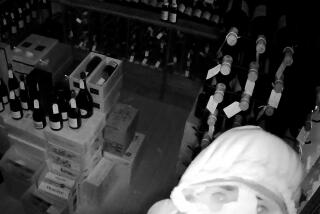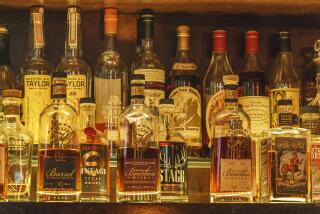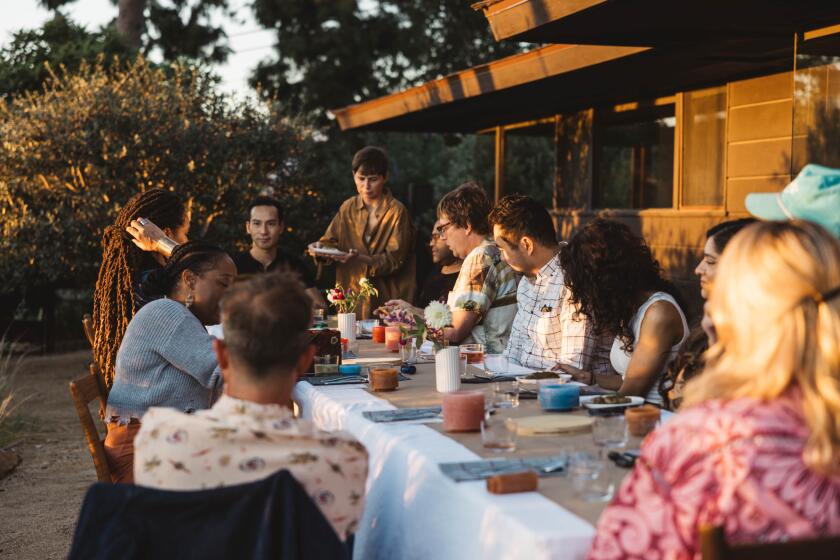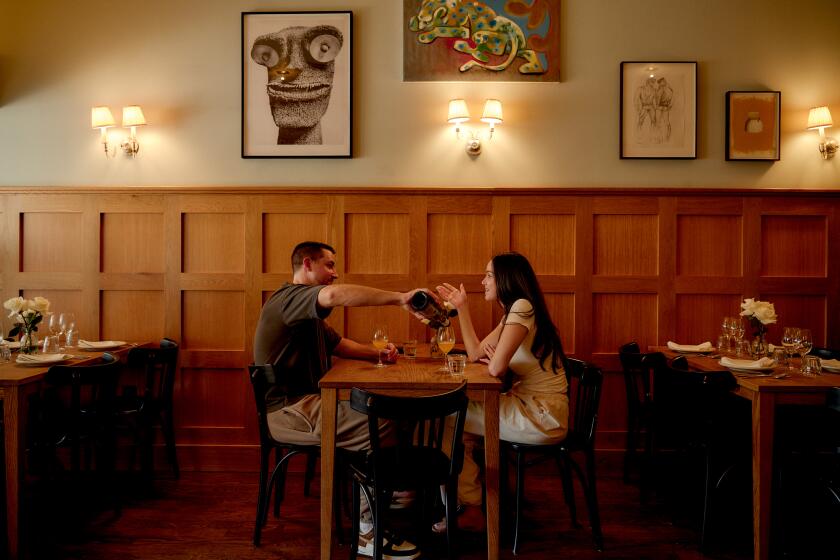Not a Joy Forever : Expensive Old Clarets Could End Up As Mere Souvenirs
THIS IS BOUND to be a controversial column, especially among the privileged few who have spent fortunes gathering clarets about which enophiles George Saintsbury and Andre L. Simon left glowing accounts. Records of recent auctions show that wine appreciators paid $156,450 for a 1787 Lafite inscribed with the initials of Thomas Jefferson, and last November a double magnum of Mouton-Rothschild 1858 brought the highest price ever paid in the United States for a single bottle: $60,500.
Lloyd Flatt of New Orleans recently invited a quorum of wine worthies to evaluate a truly incredible collection of Chateau Ausone wines, a virtual marathon of 58 vintages dating back to 1877. Terry Robards, writing in the Wine Spectator, said that the parade of these St. Emilion wines ranged from “elegant to uninspiring,” with “a feeling of disappointment” emerging halfway through the extraordinary event. While Robards gave the 1877 a score of 92, and the 1879 an even better ranking of 93, words such as oxidized , tarry , faded , even boring , are in his report. The highest praise came for younger vintages, such as the 1983 at 96.
There is no doubt that there is grandeur here, but unlike paintings and sculpture and other things of beauty, wine is not a joy forever.
So, misgivings were mixed with curiosity when I was invited to a “Dinner of the Century” at the Forge restaurant in Miami Beach. The menu was built around an 1874 Chateau Lafite-Rothschild, a 1913 Chateau Mouton-Rothschild, Corton Charlemagne 1983 of Louis Latour, Montrachet Marquis de Laguiche 1985, Clos Vougeot Joseph Morin 1959 and Chateau Latour 1961, concluding with Sauternes Chateau d’Yquem 1967. Alas, the majesty had succumbed, and that 1874 Lafite-Rothschild is now tarry in taste, a brick-and-onion-skin souvenir only. Try as I did to find some trace of the wine’s former glory, I could not. But in a second bottle of the 1913 Mouton, there remained, in a rather dried-fruit nose, a vestige of elegance. The giant of the evening’s wines was the Latour 1961, truly noble and balanced; it is now at its peak and will be for another four or five years. Bottom line? There’s no guarantee of survival for ancient clarets, even those from the great growths.
Beyond 50 years, for even the finest vintages, a wine’s delight is more mental than physical. Envy not the owners of those old clarets. Look to more youthful wines, red or white, for the most pleasure from the vine.
More to Read
Eat your way across L.A.
Get our weekly Tasting Notes newsletter for reviews, news and more.
You may occasionally receive promotional content from the Los Angeles Times.










